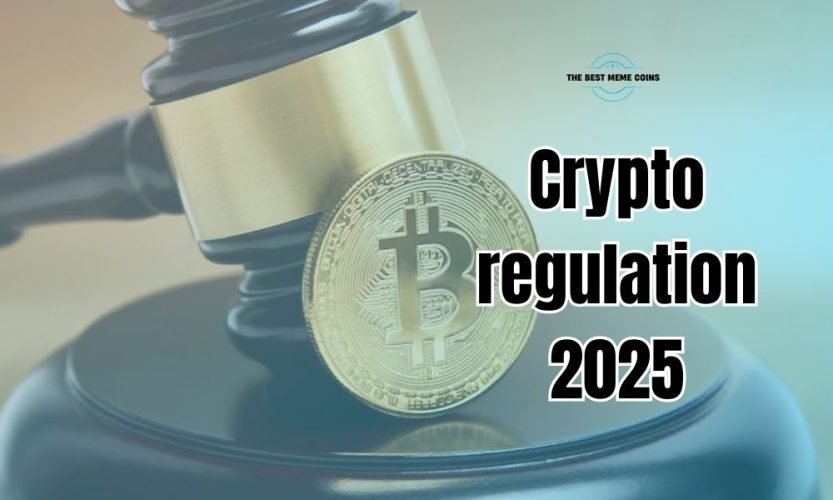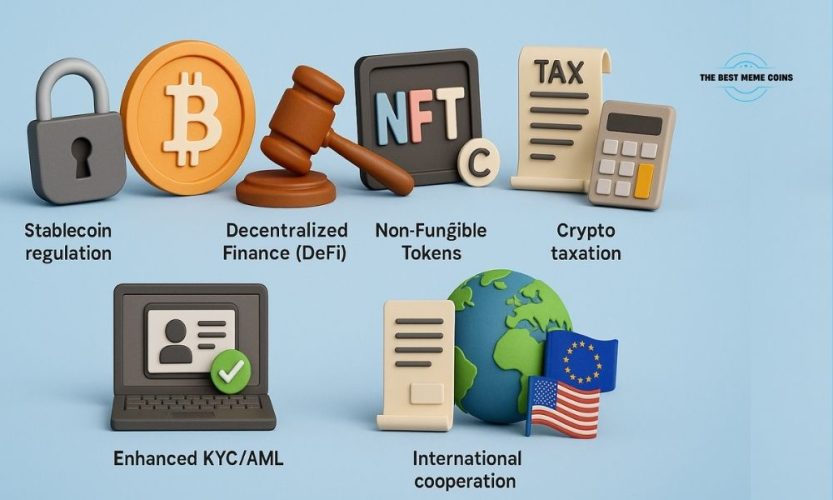The cryptocurrency market’s relentless growth attracts increasing global regulatory attention. Shaping crypto regulation 2025 is now a central discussion point, directly impacting investors, projects, and the industry’s future. Understanding potential legal trends is crucial for navigating the anticipated changes and staying ahead in this dynamic digital asset landscape.

Contents
Why is crypto regulation needed?
The absence of a unified and distinct legal framework has led to several issues:
- Investor risk: Scams, fraudulent projects, and market manipulation are prevalent, causing significant losses for investors, particularly newcomers.
- Financial instability: The high volatility and lack of oversight for certain cryptocurrencies can pose systemic risks to traditional financial markets, especially as integration deepens.
- Illicit activities: The relative anonymity of crypto transactions can be exploited for money laundering, terrorist financing, and other financial crimes.
- Lack of transparency: Many projects operate in a legal “grey area,” making it difficult to assess genuine risk and potential accurately.
For these reasons, establishing clear crypto regulation 2025 is not just desirable but an urgent requirement from multiple stakeholders, including legitimate investors and companies operating seriously within the sector.
Predicted trends for crypto regulation 2025
Based on recent actions from major jurisdictions like the United states, the European union (with MiCA), and recommendations from international bodies such as the Financial Action Task Force (FATF), several key trends for crypto regulation 2025 can be anticipated:
Stablecoin regulation: Stablecoins, pegged to stable assets like fiat currencies, are seen as vital bridges between traditional finance and crypto. However, the collapse of some algorithmic stablecoins has raised alarms. Crypto regulation 2025 is expected to focus on requiring stablecoin issuers to maintain transparent, audited asset reserves and comply with capital requirements similar to traditional financial institutions.
Decentralized Finance (DeFi): This is the most complex area to regulate due to its decentralized nature. Instead of targeting protocols directly, regulators might focus on access points (on-ramps/off-ramps), user interfaces (front-ends), or centralized service providers interacting with DeFi. Know Your Customer (KYC) and Anti-Money Laundering (AML) requirements could be applied more strictly at these gateways.
Non-Fungible Tokens (NFTs): Determining the legal nature of NFTs (are they securities, commodities, or a new asset class?) will be central. Crypto regulation 2025 may introduce clearer guidelines on the issuance, trading, and ownership of NFTs, especially those resembling securities or involving copyright issues.
Enhanced KYC/AML: Centralized exchanges (CEXs) already face increasingly stringent KYC/AML rules. This trend is likely to extend to other platforms, potentially even certain types of wallets, to curb illicit financial flows. Requirements for reporting suspicious transactions will also tighten.
Crypto taxation: Many countries will enact or clarify tax regulations concerning profits from trading, staking, lending, and other crypto-related activities. This necessitates meticulous record-keeping by investors.
International cooperation: Given crypto’s cross-border nature, collaboration between nations is key. Common standards, like FATF recommendations or the EU’s MiCA framework, will likely see broader adoption to create a level playing field and prevent criminals from exploiting jurisdictions with lax regulations. Understanding how these global efforts shape local crypto regulation 2025 is vital.

Impact of crypto regulation 2025 on the market
The implementation of crypto regulation 2025 is expected to have both positive and negative effects:
Positive:
- Increased investor and public trust.
- Attraction of capital from institutional investors.
- Reduction in scams and illicit activities.
- Creation of a healthier competitive environment for legitimate projects.
- Promotion of wider cryptocurrency adoption.
Negative:
- Higher compliance costs could challenge smaller startups.
- Overly strict regulations might stifle innovation.
- Some investors and projects might relocate to less stringent jurisdictions (regulatory arbitrage).
- Potential reduction in the anonymity and decentralization inherent in some aspects of crypto.
Crypto regulation 2025 will be a defining force for the cryptocurrency market. Key trends focusing on stablecoins, DeFi, NFTs, and enhanced KYC/AML will significantly impact all participants. Understanding and preparing for these regulatory shifts is essential for navigating the future landscape effectively. To stay informed about the latest market developments, including promising projects and analysis, ensure you follow The Best Meme Coins so you don’t miss out on crucial insights and opportunities in this evolving space.
